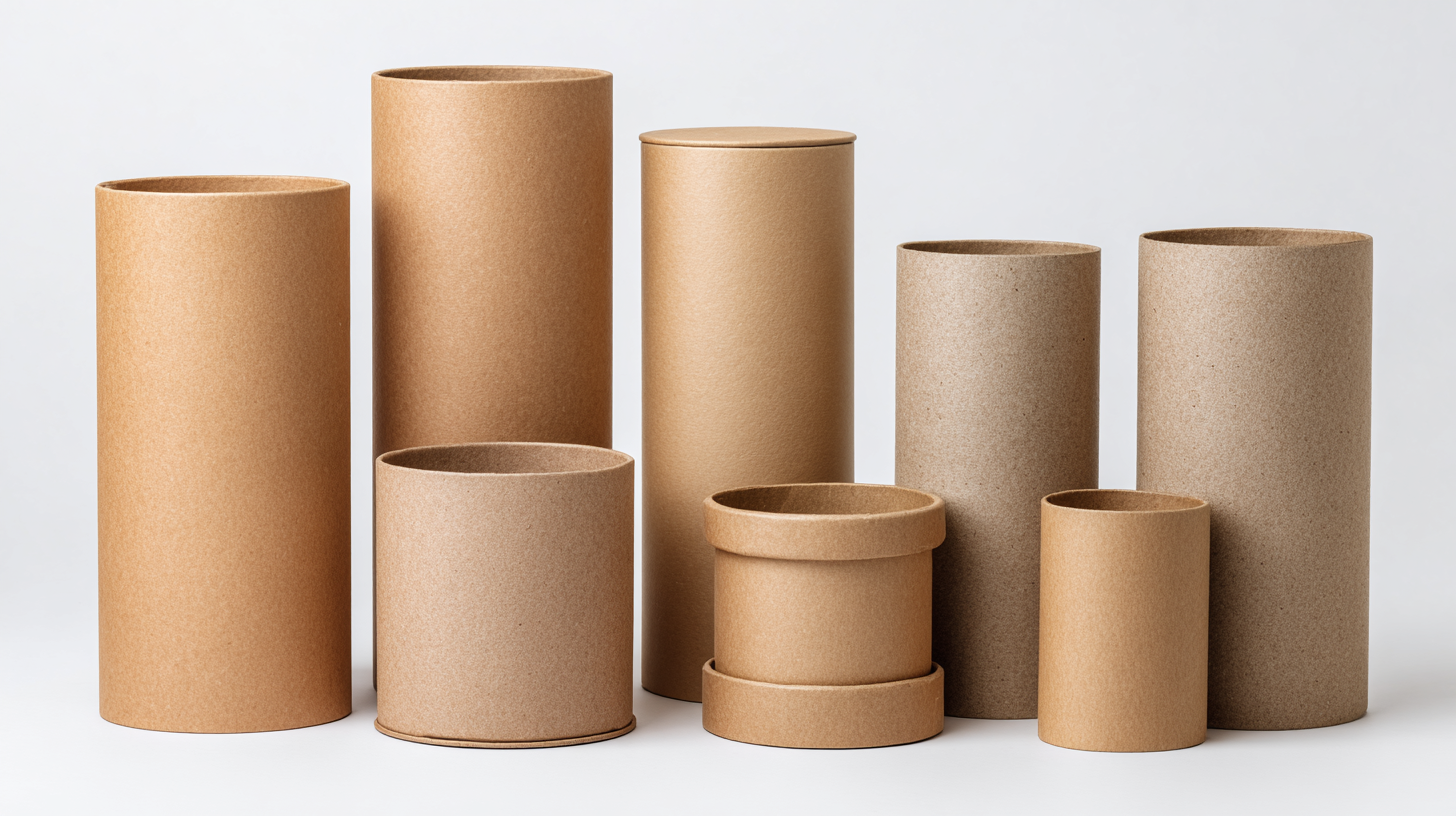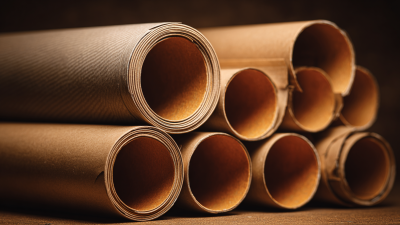Understanding the Versatility of Cardboard Tube Sizes in Everyday Use
In our daily lives, we often encounter an array of materials and products that serve various purposes, yet few are as versatile as cardboard tubes. The different cardboard tube sizes available in the market play a crucial role in a myriad of applications, from packaging and crafting to storage and artistic endeavors. Understanding these sizes is essential not only for effective use but also for optimizing resources and enhancing creativity. Whether you are looking to protect fragile items for shipping, create innovative DIY projects, or simply organize your space, knowing how to select the appropriate cardboard tube sizes can make a significant difference. This exploration into the versatility of cardboard tubes aims to highlight their practical implications and inspire imaginative uses in everyday scenarios, illustrating why these seemingly simple objects deserve our attention.

The Importance of Choosing the Right Cardboard Tube Size for Different Applications
Cardboard tubes come in a variety of sizes, each tailored for specific applications, making it crucial to select the right one. According to a report by Smithers Pira, the global demand for cardboard tubes is projected to grow at a CAGR of 4.5%, driven by their versatility in fields such as packaging, crafts, and construction. Choosing the appropriate size not only ensures the integrity of the item being stored or transported but also maximizes efficiency and cost-effectiveness.

Exploring Common Uses of Cardboard Tubes in Everyday Life
Cardboard tubes, often overlooked in their versatility, play a vital role in several aspects of everyday life. They serve as practical items in various applications, particularly in arts and crafts, educational uses, and even in sustainable architecture. For instance, in educational settings, teachers often use cardboard tubes for science experiments, providing students with hands-on experiences while utilizing materials they already have on hand. These tubes facilitate creative exploration, allowing children to construct models and prototypes that enhance their learning and investigative skills.
Moreover, the architectural field has seen innovative uses of cardboard tubes as building materials. Architects like Shigeru Ban have pioneered their use in creating sustainable structures, emphasizing the environmental benefits of using paper-based products such as these tubes. Given that cellulose, the primary component of cardboard, is an abundant and renewable resource, incorporating cardboard tubes into construction aligns with the growing movement towards eco-friendly design. This highlights not only the practicality of cardboard tubes in everyday life but also their potential to contribute to sustainable development in architecture.
Comparative Analysis of Different Cardboard Tube Sizes and Their Benefits
Cardboard tubes are essential in various industries, serving applications ranging from packaging to crafting. A comparative analysis of different cardboard tube sizes reveals their unique benefits tailored to specific uses. For instance, according to a report by Smithers Pira, the global market for cardboard tubes is expected to reach $7.1 billion by 2024, highlighting the increasing demand for versatile packaging solutions.
 Smaller tubes, typically with diameters under 3 inches, are ideal for arts and crafts or storing documents, whereas larger tubes can accommodate heavier items like fabric rolls or posters, offering structural integrity and protection.
Smaller tubes, typically with diameters under 3 inches, are ideal for arts and crafts or storing documents, whereas larger tubes can accommodate heavier items like fabric rolls or posters, offering structural integrity and protection.
When selecting cardboard tube sizes, consider your specific needs. For lightweight items, choose smaller tubes (e.g., 1-2 inches in diameter) to minimize material costs while ensuring adequate protection. Conversely, for heavier goods or bulk storage, opt for larger tubes (over 4 inches) that can support additional weight without compromising durability.
Tip: Always calculate the total circumference and length needed to avoid excess waste. Additionally, consider custom sizes that align closely with the items you plan to store or ship, optimizing both efficiency and cost-effectiveness in your packaging strategies.
Innovative Ways to Repurpose Cardboard Tubes for Home and Office Use
Cardboard tubes, often discarded after the last roll of paper or wrap, possess incredible potential for creative repurposing in both home and office settings. One innovative application is to transform these tubes into storage solutions. For example, cut tubes can be used to organize cables and cords, preventing tangling and making it easy to locate specific items. Additionally, multiple tubes can be glued together to create custom drawer dividers or desk organizers, allowing for a more efficient use of space.
Another exciting way to repurpose cardboard tubes is through crafting projects. They can be easily transformed into decorative photo holders, unique vases, or even children’s art supplies. By painting, wrapping, or adding embellishments, these tubes can take on a new life, enhancing the aesthetic of your living space or inspiring creativity in kids. Furthermore, their sturdy structure makes them ideal for creating play props or educational tools. The versatility and accessibility of cardboard tubes encourage sustainable practices while adding a fun and personal touch to everyday items.
Understanding the Versatility of Cardboard Tube Sizes in Everyday Use
| Use Case | Dimensions (Diameter x Height) | Repurposing Ideas | Benefits |
|---|---|---|---|
| Craft Projects | 2.5 cm x 15 cm | Make binoculars or telescopes for children | Encourages creativity and enhances fine motor skills |
| Office Organization | 4 cm x 20 cm | Sort and store cables and chargers | Reduces clutter and prevents tangling |
| Gift Wrapping | 3 cm x 10 cm | Create unique gift holders for small items | Adds a personal touch to gift giving |
| Home Decor | 5 cm x 30 cm | Create modern wall art or sculptures | Enhances interior aesthetics on a budget |
| Garden Tools | 5 cm x 25 cm | Create plant markers or seed starters | Promotes gardening and plant care |
Sustainability and Environmental Impact of Cardboard Tubes in Packaging Solutions
Cardboard tubes have emerged as a sustainable alternative in the packaging industry, primarily due to their eco-friendly nature. Made from recyclable materials, these tubes reduce the reliance on plastics and contribute to a circular economy. When discarded, cardboard tubes break down naturally, minimizing their environmental footprint. Their renewability is a critical factor that makes them appealing to businesses and consumers who prioritize sustainability in their choices.
Moreover, the versatility of cardboard tubes in various sizes allows for diverse applications, from shipping products to containing art supplies. By adopting cardboard tubes in packaging solutions, companies can significantly decrease waste and enhance their sustainability credentials. Manufacturers are increasingly focusing on the life cycle of their products, ensuring that even the tubes used for packaging can be reused or recycled effectively. This commitment not only benefits the environment but also aligns with the growing consumer demand for sustainable practices in everyday products.
Related Posts
-

Exploring Market Trends and Opportunities for Cardboard Tubes at the 138th Canton Fair in 2025
-

7 Best Reasons to Choose Cardboard Tube Boxes for Your Global Packaging Needs
-

Essential Guide to Cardboard Postal Tubes: Choosing the Right Type for Your Shipping Needs
-

5 Essential Tips to Maximize Your Sourcing Strategy for Carton Tubes
-

5 Essential Tips for Choosing the Right Heavy Duty Cardboard Tubes
-

How to Efficiently Utilize Cardboard Cores in Packaging Solutions